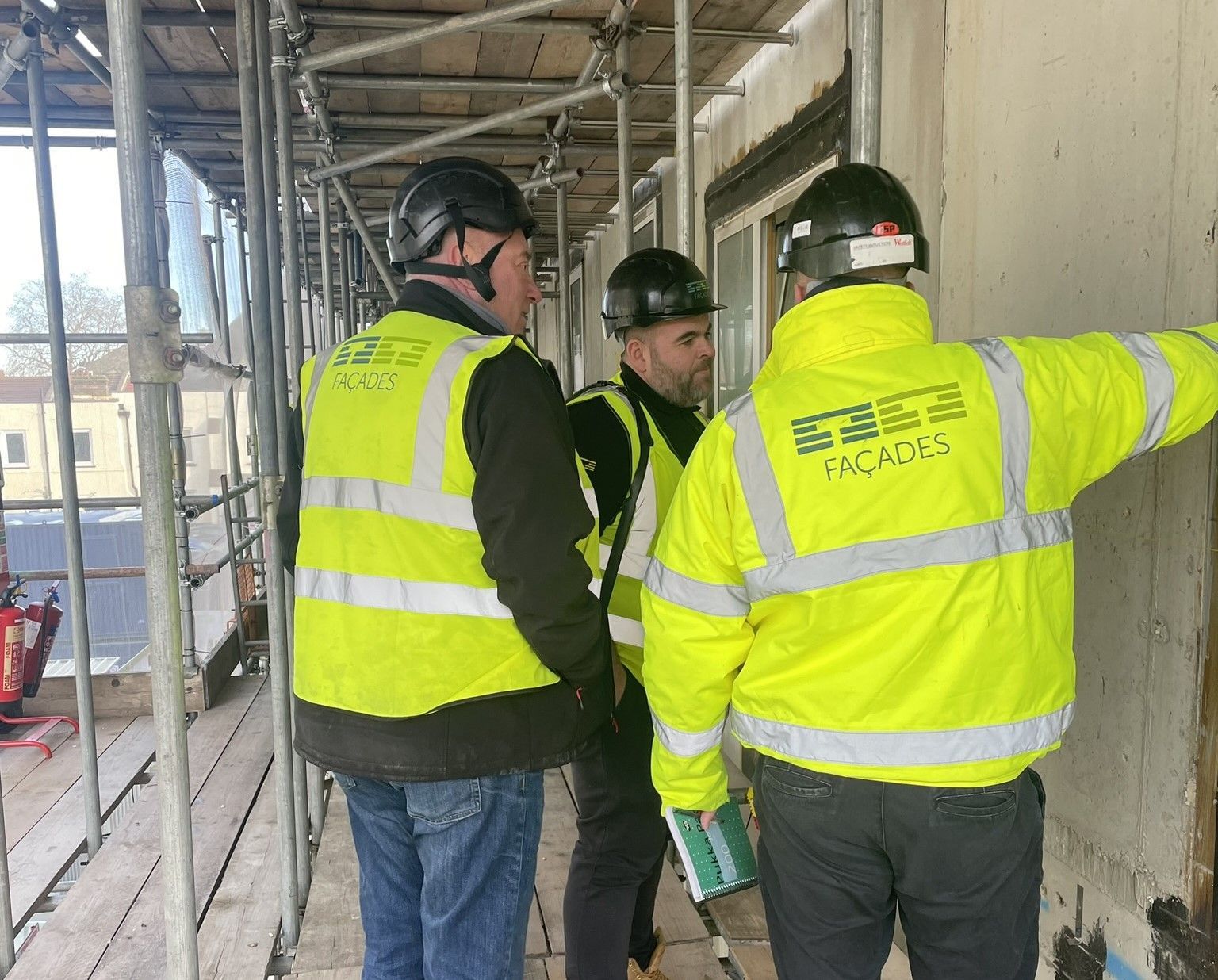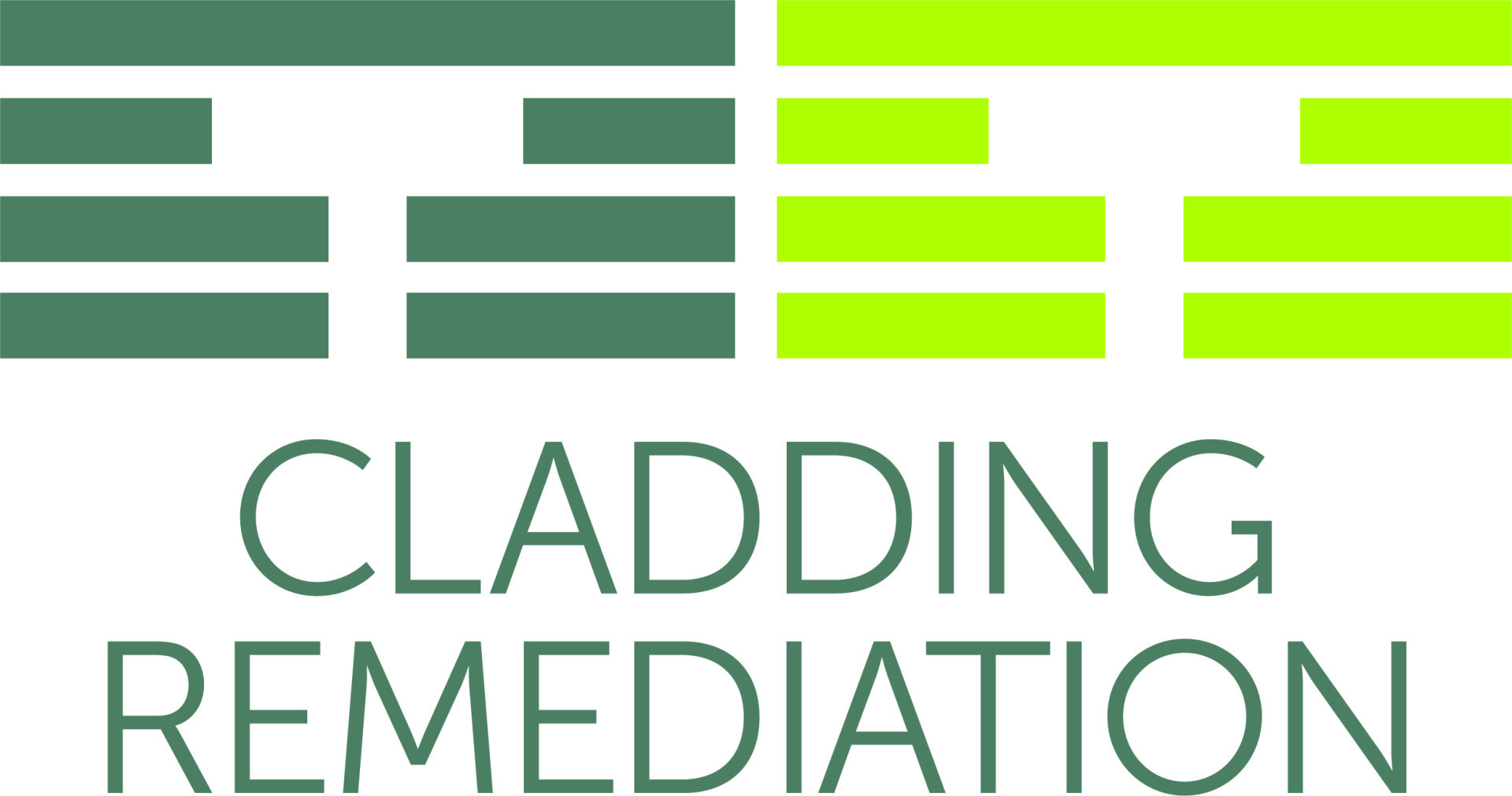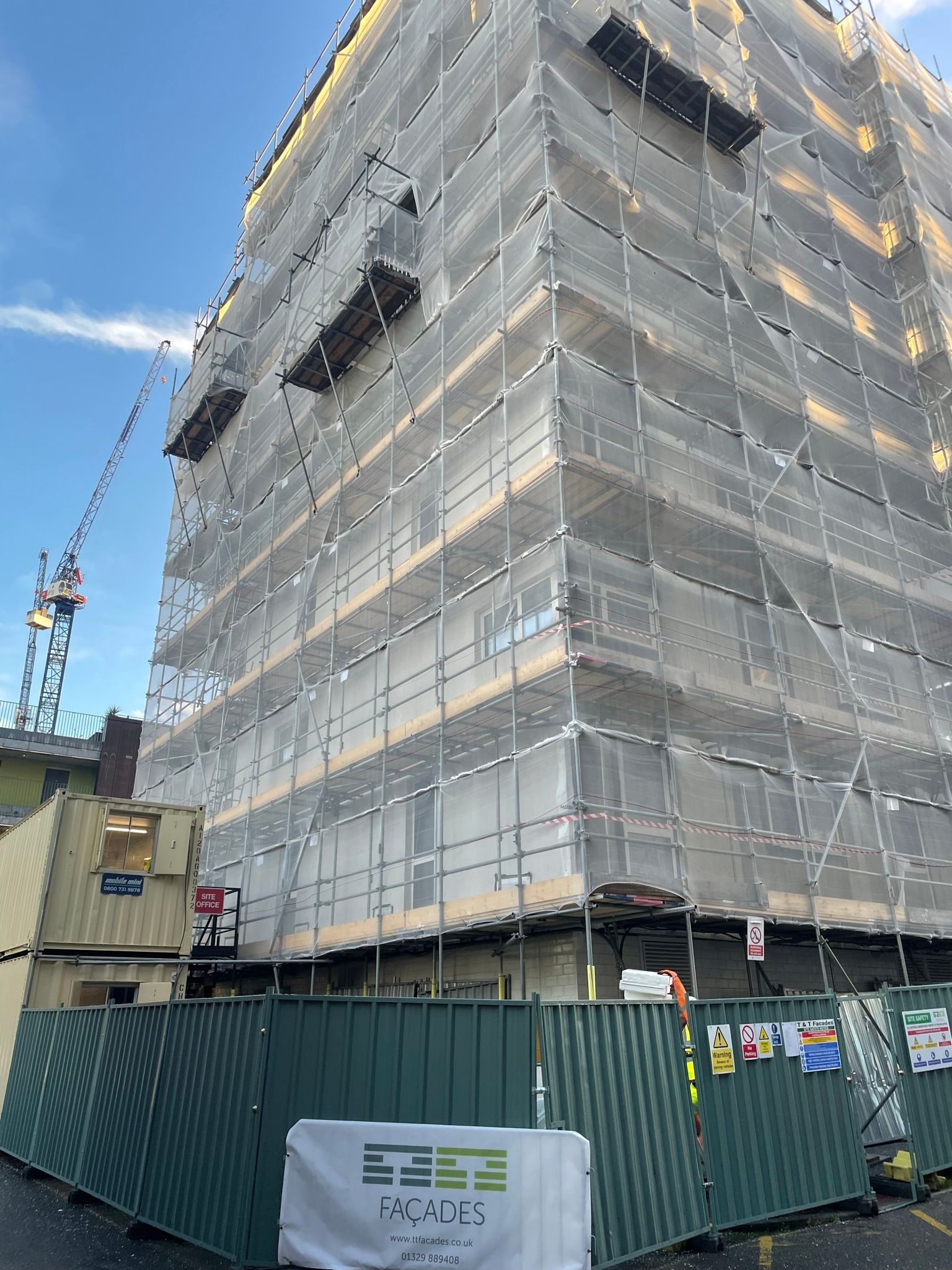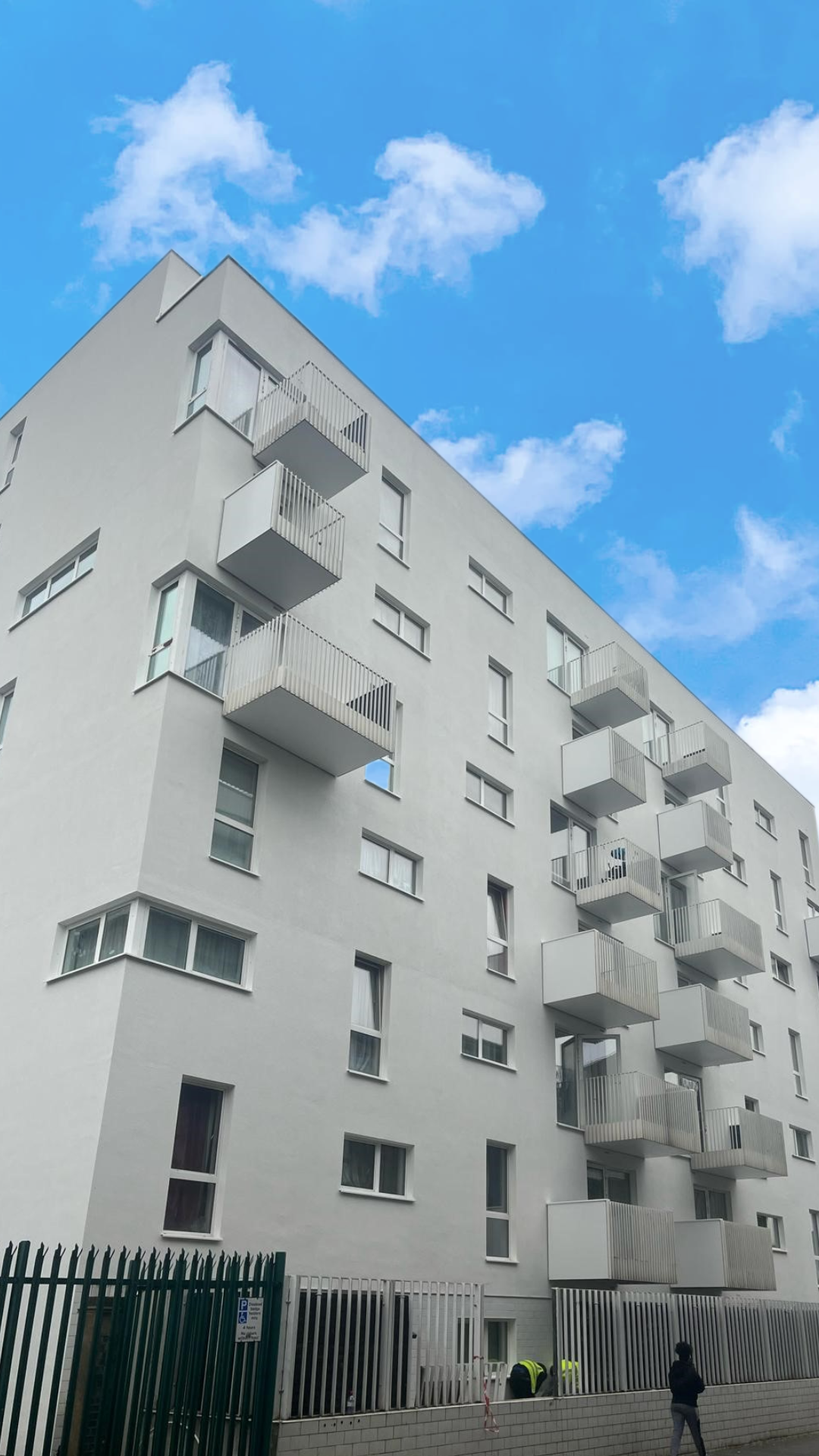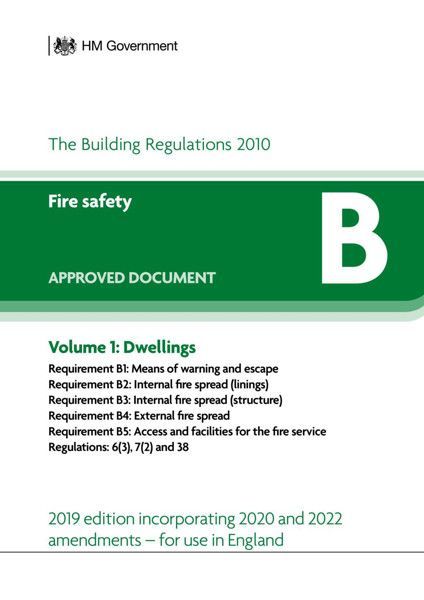Cladding Remediation - What You Need To Know
The Top 10 most common questions and answers

Much has been written and reported on in recent years about Cladding Remediation, particularly since the Grenfell Tower fire in 2017. It is quite a complex topic which throws up many questions, particularly for those affected - landlords, property developers, housing associations and not least the residents, many of whom have found themselves in limbo. Here we have tried to answer the most common questions and provide some clarity.
1. WHAT IS CLADDING REMEDIATION?
Cladding Remediation refers to the process of repairing or replacing cladding materials on a building to address issues related to safety, durability, and functionality. Cladding remediation typically involves identifying and addressing problems with the existing cladding system, such as water ingress, fire hazards, or structural instability.
In recent years, there has been increased concern about the use of certain types of cladding materials, such as combustible materials like aluminum composite panels, which have been linked to high-rise fires. As a result, cladding remediation has become an important issue for many building owners and managers, particularly those with high-rise buildings.
Cladding Remediation may involve replacing the existing cladding with new, safer materials, or making repairs and modifications to the existing cladding system to address identified issues. The process may also involve a range of other measures, such as upgrades to fire safety systems, improved insulation, and changes to building design and construction practices. Cladding Remediation can be a complex and costly process, but it is often necessary to ensure the safety and longevity of a building.
2. CAN YOU RE-CLAD OVER EXISITING CLADDING?
Yes, it is possible to reclad over existing cladding in some cases. However, whether or not this is a feasible option will depend on a number of factors, including the behaviour in relation to fire and the condition of the existing cladding, the type of new cladding that you want to install, and the structural integrity of the underlying walls (substructure).
If the existing cladding is in good condition and has a flat surface, it may be possible to install the new cladding directly over it. However, if the existing cladding is damaged, has uneven surfaces, or is not suitable for the new cladding material, it will be necessary to remove it first.
Additionally, it is important to consider whether the underlying walls (substructure) are structurally sound enough to support the weight of the new cladding. It is always best to consult with a professional cladding contractor such as T&T Facades / T&T Cladding Remediation or an engineer to determine if recladding over existing cladding is a viable option for your specific situation.
3. CAN I RECLAD MY PROPERTY WITHOUT BUILDING CONSENT?
The answer to whether you can reclad your property without building consent / control depends on the regulations in your local area and the specific details of your project. In general, recladding work usually requires consent from your local building authority, particularly if the work involves structural alterations, changing the cladding type, or making any changes that could affect the integrity of the building envelope or fire safety.
Building regulations are regularly updated and complex to navigate depending on building parameters, so it is essential to check with your local building authority or council to determine the specific requirements in your area. It is always best to ensure that you have the necessary approvals and permits before starting any work to avoid the risk of fines or potential legal issues.
It is also important to note that recladding work can be complex and potentially hazardous, particularly if you are working at height, using heavy materials or tools, or working with hazardous substances. It is always recommended to use a professional contractor who is licensed, experienced, and insured to undertake the work safely and effectively.
4. DO I NEED PLANNING PERMISSION TO CHANGE THE CLADDING ON MY PROPERTY?
In most cases, you will not need planning permission to change the cladding on your property. However, you may need to obtain building regulations approval from your local building control authority or approved inspector.
Planning permission is typically only required for changes that significantly alter the appearance of a building or its surroundings. This may include changes to the size, shape, or design of a building, or alterations to the use of the building. However, the rules and regulations regarding planning permission can vary depending on your location, so it is always best to check with your local planning authority to confirm whether you need planning permission or not.
Building regulations approval, on the other hand, is required for all building work to ensure that it meets the necessary safety and construction standards. This includes changes to the cladding of a building, particularly if the work involves structural alterations or changes that could impact the safety of the building or its occupants. Building regulations are enforced by your local building control authority, and it is essential to obtain approval before starting any building work.
It is important to note that the rules and regulations regarding planning permission and building regulations can be complex, and it is always recommended to seek professional advice before undertaking any building work. A licensed contractor or architect can help you navigate the requirements and ensure that your project is compliant with all relevant regulations.
5. CAN I GET FUNDING TO RECLAD MY PROPERTY?
Yes, there may be funding options available to help you reclad your property. The availability of funding and the specific programmes that are available will depend on your location, the type of property you own, and the reason for the recladding work.
In many cases, government grants, loans, or subsidies may be available to property owners who need to undertake recladding work for safety or energy efficiency reasons such as the Building Safety Fund (see below). These programmes may be offered by local or national government agencies, and eligibility criteria will vary depending on the specific programme.
Another funding option is through financing or loans from banks, building societies, or other financial institutions. Some lenders offer home improvement loans or mortgages that can be used to finance home renovation projects, including recladding work.
It is also worth considering any insurance coverage you may have. If your recladding work is due to damage caused by an insured event, such as a storm or fire, your insurance policy may cover some or all of the costs.
It is important to do your research and explore all of the available funding options to determine the best option for your specific situation. Additionally, be sure to thoroughly review the terms and conditions of any financing or funding before making a commitment.
6. WHAT IS THE BUILDING SAFETY FUND?
The Government Building Safety Fund is a funding programme set up by the UK government to help fund the removal and replacement of unsafe cladding systems on high-rise residential buildings (over 18 meters or six stories in height). The fund was established in May 2020 in response to concerns about the safety of high-rise buildings in the wake of the Grenfell Tower fire in 2017.
The fund is designed to support building owners and residents in the removal and replacement of unsafe cladding systems, including those made of aluminum composite material (ACM) and other combustible materials. The fund is available to both private and social housing sectors, as well as other types of high-rise buildings such as hotels, student accommodations, and hospitals.
The government has allocated £5 billion to the fund, with £3.5 billion earmarked for the remediation of high-rise residential buildings, and an additional £1 billion for the remediation of non-residential high-rise buildings. Building owners and managers can apply for the fund through an online application process, which includes providing evidence of the unsafe cladding and details of the remediation plans.
The Building Safety Fund is just one of the measures that the UK government has put in place to improve the safety of high-rise buildings in the wake of the Grenfell Tower tragedy. Other measures include changes to building regulations, increased fire safety inspections, and the establishment of a new regulatory body, the Building Safety Regulator, which will oversee the safety of high-rise buildings.
7. WHAT DOES IT COST TO RECLAD A BUILDING?
The cost of recladding a building in the UK can vary depending on several factors, such as the size and complexity of the building, the type of cladding material used, and the extent of any remedial works required. However, as an approximate guide, the cost of recladding a building in the UK can range from £200 to £1,000 per square metre. For example, recladding a small residential building with basic materials may cost around £10,000 to £30,000, while recladding a large commercial building with high-quality materials and complex designs may cost several million pounds.
It's important to note that the cost of recladding a building in the UK has increased in recent years due to concerns about fire safety and the need to comply with stricter building regulations. The cost of upgrading a building's cladding system to meet current fire safety standards can be significant, particularly for buildings with high-risk cladding materials such as ACM, which can require complete removal and replacement.
In addition to the cost of the recladding itself, there may be additional costs associated with the need to comply with building regulations and fire safety standards, which may require additional fire protection measures, such as fire-resistant insulation, or the need to upgrade other parts of the building's structure. It's advisable to seek the advice of a qualified building surveyor or construction specialist like T&T Facades / T&T Cladding Remediation to obtain an accurate estimate of the cost of recladding a building in the UK. They can provide a detailed cost breakdown and identify any potential issues that may affect the cost of the recladding project. T&T provides a free consultation and quotation service.
8. How does fire rating affect my cladding project?
Reaction to fire of all products is an essential consideration for any cladding project, as it determines the level of fire safety protection that the cladding system provides for a building. Fire rating refers to the length of time that a cladding system can resist fire before it fails, allowing fire to spread through the building.
The fire rating of a cladding system is determined by various factors, including the type of cladding material, the thickness of the cladding panels, and the way that the panels are installed. Explicit tests must be strictly adhered to, to provide a reaction to fire class of A2-s1-d0 or A1.
When planning a cladding project, it's essential to ensure that the chosen cladding system meets the requirements of regulation 7 as well as the required fire rating for the building's height and intended use. This is particularly important for high-rise buildings, where fire can spread quickly through the building and cause significant damage and loss of life.
In some cases, it may be necessary to incorporate additional fire protection measures, such as fire-resistant insulation, in order to achieve the required fire rating for the cladding system. It's also important to ensure that the cladding system is installed correctly and that all relevant fire safety regulations and standards are met.
Failing to take into account fire rating requirements can lead to serious consequences, including the potential for fire to spread quickly through the building and cause significant damage and loss of life. It can also result in costly remedial works and legal liabilities if fire safety regulations are not met.
9. CAN I SELL MY PROPERTY WITH CLADDING ISSUES?
If your property has cladding issues, it may be difficult to sell it as many buyers may be hesitant to purchase a property with potential fire safety risks. The cladding issue has become a significant concern for many homeowners in recent years due to the Grenfell Tower tragedy in 2017, which highlighted the importance of building safety.
Depending on the severity of the cladding issues and the type of cladding used, you may need to take steps to remediate the issues before putting the property on the market. This may involve replacing the cladding, conducting a fire risk assessment, or implementing other safety measures to ensure the property is safe for occupants.
It's essential to note that many mortgage lenders and insurers have become cautious about lending on or insuring properties with cladding issues without an appropriate EWS1 form (see below). As a result, if you choose to sell a property with cladding issues, without a EWS1 form, you may have limited options for potential buyers, and the sale price may be affected.
Therefore, it's advisable to consult a qualified building surveyor or fire safety expert to assess the cladding issues and provide recommendations on how to remediate them. This will not only help to ensure the safety of the property's occupants but also increase the likelihood of finding a buyer and achieving a fair sale price.
10. WHAT IS AN EWS1 FORM?
An EWS1 form (External Wall Fire Review) is a standardised document that assesses the external wall construction of high-rise residential buildings (typically over 18 meters tall) and determines whether there are any fire safety risks associated with the building's cladding system.
The form was introduced in the aftermath of the Grenfell Tower tragedy in 2017, which highlighted the importance of fire safety in high-rise buildings. The form is used by lenders and surveyors to assess the fire risk associated with a property's cladding system, (and external wall) and it aims to provide greater transparency and consistency across the industry.
The EWS1 form is usually completed by a qualified fire safety expert or chartered building surveyor, who will inspect the building's external wall construction and determine whether any remedial action is required to mitigate fire risks. The form will detail the results of the inspection, including any remediation works that are necessary and any risks that may be associated with the cladding system.
The EWS1 form is typically required when buying or selling a high-rise residential property, or when applying for a mortgage or insurance on such a property.
